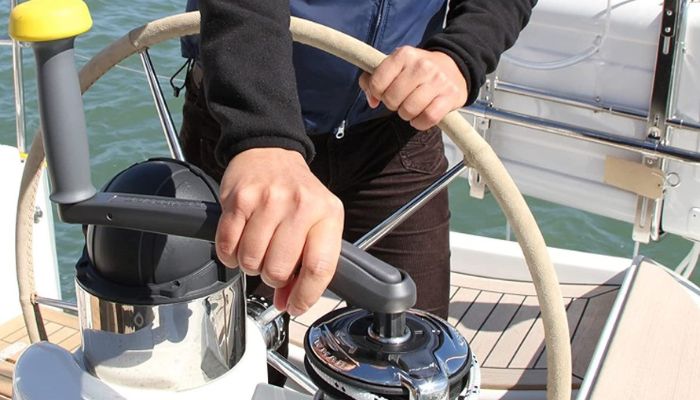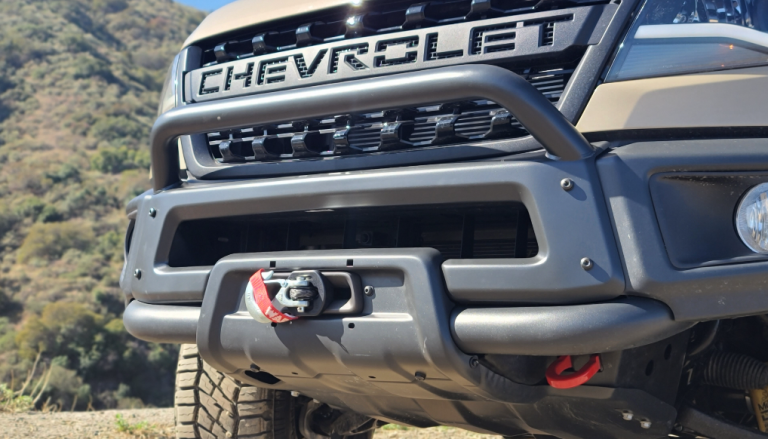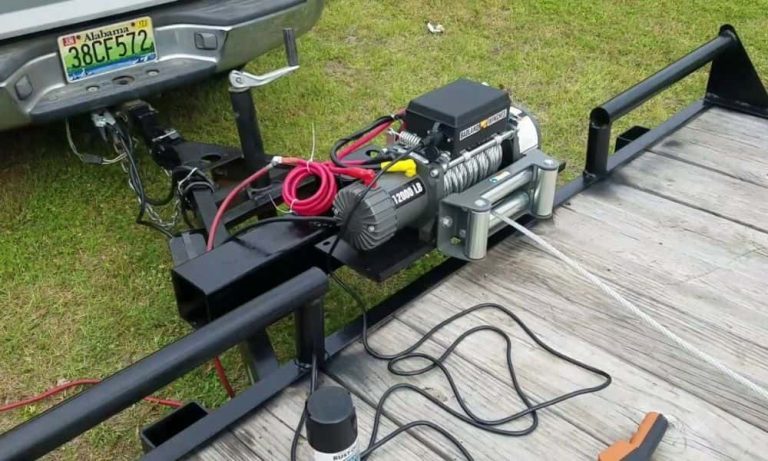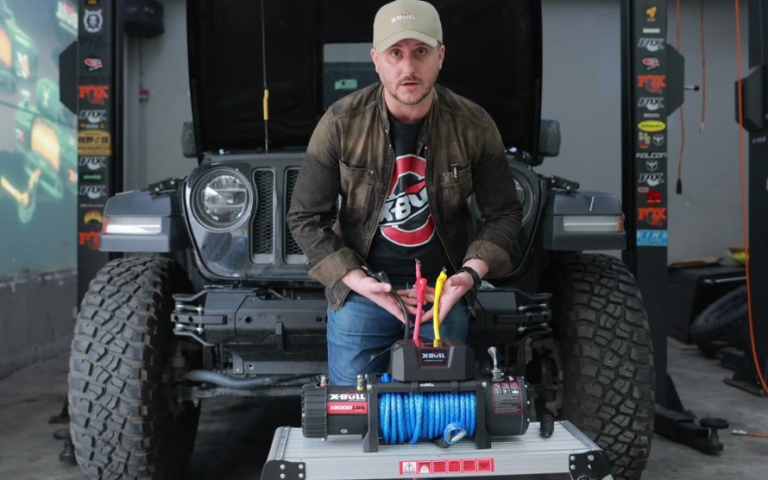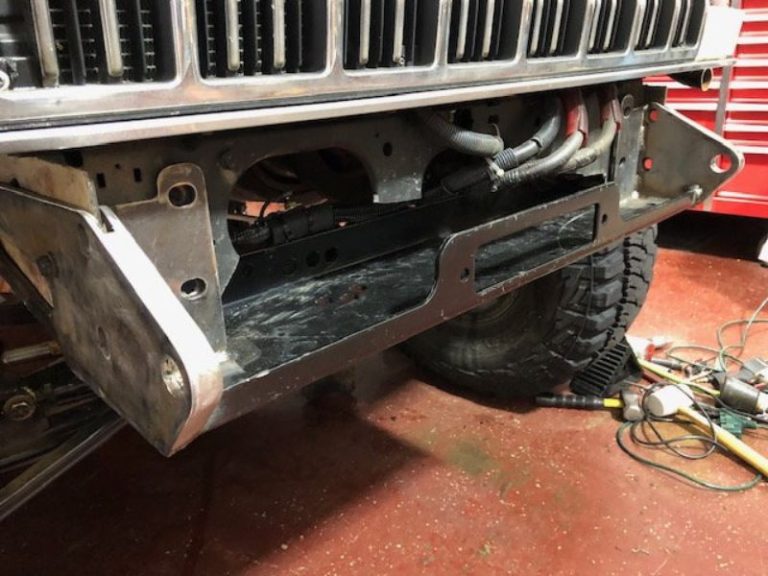Winching is a common practice among off-road enthusiasts, hunters, and construction workers alike. It involves using a winch to pull a heavy load or vehicle out of a difficult situation, such as getting stuck in mud or sand.
While winching can be a useful tool, it also poses several safety risks if not done properly.
In this article, we will discuss the importance of winching safety precautions and provide a brief overview of some of the essential steps to take to ensure a safe winching experience.
So, let’s dive into the world of winching safety precautions and learn how to protect yourself and those around you.
Understanding Winches
Winches are powerful machines that are commonly used in various industries, such as construction, mining, and off-roading. They are versatile tools that can pull or lift heavy objects, vehicles, or equipment in different directions.
Understanding winches is crucial for anyone who needs to use them, as it ensures that they can operate them safely and effectively.
Types of winches and their uses
There are different types of winches that are designed for various purposes. Here are some of the most common types of winches:
Electric Winches: Electric winches are powered by electricity and are ideal for light to moderate applications. They are commonly used in off-road vehicles, boats, and trailers.
Hydraulic Winches: Hydraulic winches are powered by hydraulic systems and are ideal for heavy-duty applications. They are commonly used in construction sites, mining operations, and military vehicles.
Hand Winches: Hand winches are operated manually and are ideal for light applications. They are commonly used in boats and small vehicles.
How winches work
Winches work by converting the rotational force of a motor or engine into linear force through a spool and cable system. The motor or engine rotates the spool, which winds the cable around it.
As the cable is wound around the spool, the load attached to the other end is pulled in the direction of the winch.
Components of a winch
Winches have different components that work together to pull or lift loads. Here are some of the most common components of a winch:
Motor: The motor is the source of power that rotates the spool and winds the cable.
Spool: The spool is the cylinder around which the cable is wound.
Cable: The cable is the rope or wire that is wound around the spool and is used to pull or lift loads.
Gearbox: The gearbox is the mechanism that controls the speed and torque of the winch.
Control Switch: The control switch is the device that controls the direction and speed of the winch.
Preparing for Winching
Winching is a useful tool for pulling or lifting heavy loads, but it can also be dangerous if not done properly. To ensure a safe and successful winching operation, it’s essential to prepare adequately beforehand.
Steps you need to take when preparing for winching.
Assessing the Situation
Before starting any winching operation, it’s crucial to assess the situation carefully. Determine the weight of the load you need to pull, the distance you need to move it, and any potential obstacles or hazards that could affect the operation.
Selecting the Right Winch and Equipment
Choosing the right winch and equipment is critical to the success of your winching operation.
Consider the weight and size of the load you need to pull, the distance you need to move it, and the type of terrain you will be working on.
Ensure that the winch and equipment you select have a sufficient capacity to handle the load you need to pull.
Inspecting Equipment for Damage or Wear
Inspect all winch and equipment components for signs of damage or wear before starting any winching operation.
Look for any cracks, bends, or other defects in the winch cables, hooks, or other equipment. Replace any damaged or worn components before proceeding with the operation.
Clearing the Area of Obstacles
Before beginning a winching operation, clear the area of any obstacles or hazards that could interfere with the operation.
Remove any rocks, debris, or other objects that could get caught in the winch cable or cause damage to the equipment.
Securing the Anchor Point
The anchor point is the point where the winch cable will be attached. It’s essential to ensure that the anchor point is secure and can handle the weight of the load you need to pull.
Use a strong and sturdy anchor point such as a tree, rock, or other solid object. Ensure that the anchor point is in a straight line with the winch to avoid any side loads on the cable.
Preparing the Winch Cable
Before attaching the winch cable to the load, ensure that it’s in good condition and free of any knots or kinks that could weaken the cable.
Unspool the cable completely and inspect it for any signs of wear or damage. Attach the hook or other attachment device to the cable and secure it tightly to the load.
Winching is a powerful tool that can help you move heavy loads safely and efficiently. Preparing adequately beforehand is crucial to ensure a safe and successful winching operation.
Remember to assess the situation, select the right winch and equipment, inspect equipment for damage or wear, clear the area of obstacles, secure the anchor point, and prepare the winch cable before starting any winching operation.
Basic Winching Techniques
Winching is a powerful tool that can help you move heavy loads safely and efficiently, but it’s essential to use it correctly to avoid accidents or damage to equipment.
Here, we will discuss some basic winching techniques that you should know before operating a winch.
Safety Precautions Before Winching
Before starting any winching operation, ensure that all safety precautions are in place. These include wearing proper personal protective equipment, such as gloves and eye protection, ensuring that the area is clear of people and obstacles, and keeping a safe distance from the winch and load.
Techniques for Operating the Winch
Operating a winch requires a few basic techniques to ensure a smooth and successful operation. First, ensure that the winch cable is properly attached to the load and that the anchor point is secure.
Start the winch slowly and steadily, keeping the cable tight to avoid any slack that could cause the cable to become tangled or damaged.
If necessary, use a winch accessory, such as a snatch block, to increase the pulling power of the winch or change the direction of the pull.
Common Mistakes to Avoid
When operating a winch, it’s essential to avoid some common mistakes that could lead to accidents or damage to equipment. Never exceed the winch’s capacity, as this could cause the winch to fail or the cable to snap.
Avoid sudden movements or jerks that could cause the load to shift or the cable to become tangled. Never wrap the cable around the load, as this could cause it to bind or damage the load.
Managing the Winch Cable
Proper management of the winch cable is essential to ensure a successful winching operation. Keep the cable straight and avoid any twists or kinks that could weaken the cable or cause it to snap.
Use gloves when handling the cable to avoid cuts or burns. If the cable becomes frayed or damaged, replace it immediately.
Winching is a useful tool that can help you move heavy loads safely and efficiently. Before starting any winching operation, ensure that all safety precautions are in place, and use the proper techniques to operate the winch.
Avoid common mistakes, and properly manage the winch cable to ensure a successful winching operation. Remember to always prioritize safety and follow the manufacturer’s instructions for your specific winch model.
Winching Safety Precautions
Winching can be a hazardous activity that requires the use of proper safety precautions to prevent accidents or injury.
In this guide, we will discuss several winching safety precautions that you should follow to ensure a safe and successful winching operation.
Personal Protective Equipment
Personal protective equipment is essential when operating a winch. This includes gloves, eye protection, and proper footwear to protect your hands, eyes, and feet from injury.
If you are using a synthetic winch cable, ensure that you use gloves that are rated for use with synthetic materials.
Using a Winch Damper Blanket
A winch damper blanket is a safety device that helps prevent winch cable recoil in case of cable failure. When winching, place the damper blanket over the cable a short distance from the anchor point.
This will help to prevent the cable from whipping back if it fails, reducing the risk of injury.
Maintaining a Safe Distance from the Winch
When operating a winch, maintain a safe distance from the winch and the load. Keep bystanders and other people out of the area to prevent accidents or injury in case of a cable failure or other winch-related incidents.
Avoiding Excessive Tension on the Winch Cable
Never exceed the winch’s capacity, as this can cause the cable to snap, leading to injury or property damage.
Avoid jerky movements that could cause the load to shift suddenly, and keep the winch cable tight to prevent slack that could cause the cable to tangle or become damaged.
Being Aware of Surroundings and Bystanders
When winching, be aware of your surroundings and any bystanders in the area. Keep the area clear of obstacles and people to prevent accidents or injury.
If necessary, use warning signs or barriers to prevent people from entering the winching area.
Safety Precautions When Using a Remote Control
If your winch is equipped with a remote control, ensure that you use it safely. Keep the remote control within reach but away from the winch and the load to prevent accidental activation.
If possible, use a wired remote control to reduce the risk of interference or battery failure.
Winching Etiquette
Winching etiquette is an important aspect of off-roading that involves proper and respectful behavior when using a winch.
In addition to considerations for the winch operator and bystanders, there are several other key elements of winching etiquette that should be kept in mind.
Communicating with bystanders and others involved: Clear communication is essential when using a winch, and it’s important to keep bystanders and others involved in the operation informed about what is happening.
Use hand signals or verbal commands to indicate when the winch is in use, and make sure that everyone involved understands their role in the operation.
Proper use of recovery points: Recovery points are designed to provide a safe and secure anchor for winching operations.
Make sure that you’re using the appropriate recovery points for your vehicle, and that they are securely attached to the frame.
Avoid using tow balls or other unapproved attachment points, as these can be dangerous and may cause damage to your vehicle.
Avoiding damage to the environment: Off-roading can be a fun and exciting activity, but it’s important to be mindful of the impact that it can have on the environment.
When winching, take care to avoid damaging trees or other vegetation, and be mindful of any sensitive habitats or protected areas in the vicinity.
Being respectful of other off-roaders: When off-roading, it’s important to be respectful of other people who may be using the same area.
If you encounter other off-roaders, be courteous and considerate, and try to avoid disrupting their activities. If you’re using a winch, make sure that you’re not blocking any trails or access points.
Frequently Asked Questions about Winching Safety Precautions
What kind of personal protective equipment (PPE) should I wear when winching?
Answer: It is recommended to wear PPE such as gloves, eye protection, and sturdy footwear to protect yourself from potential hazards.
What is a winch damper blanket and why is it important?
Answer: A winch damper blanket is a safety device that is placed over the winch cable during a recovery operation to prevent the cable from snapping and causing injury or damage.
It is important to use a winch damper blanket to protect yourself and others in the vicinity.
How do I maintain a safe distance from the winch during a recovery operation?
Answer: It is recommended to stay at least twice the length of the winch cable away from the winch during operation, and to never stand in the direct line of the cable.
What should I do if the winch cable becomes too tense?
Answer: It is important to avoid excessive tension on the winch cable, as this can cause the cable to snap and potentially cause injury or damage.
If the cable becomes too tense, stop winching immediately and reassess the situation before proceeding.
How can I avoid accidentally hitting bystanders or obstacles during a recovery operation?
Answer: It is important to be aware of your surroundings at all times, and to use spotters or clear communication to ensure that everyone involved in the operation understands what is happening.
Avoid winching in areas with obstacles or bystanders that cannot be easily cleared.
Conclusion
In conclusion, winching is an important off-roading skill that requires careful attention to safety precautions.
By following the steps outlined in this article, including understanding winches, preparing for winching, and using basic winching techniques, off-roaders can safely and effectively recover their vehicles from difficult situations.
In summary, always remember to prioritize safety and be respectful of others and the environment when using a winch. By following these precautions and best practices, you can ensure a successful and enjoyable winching experience.


